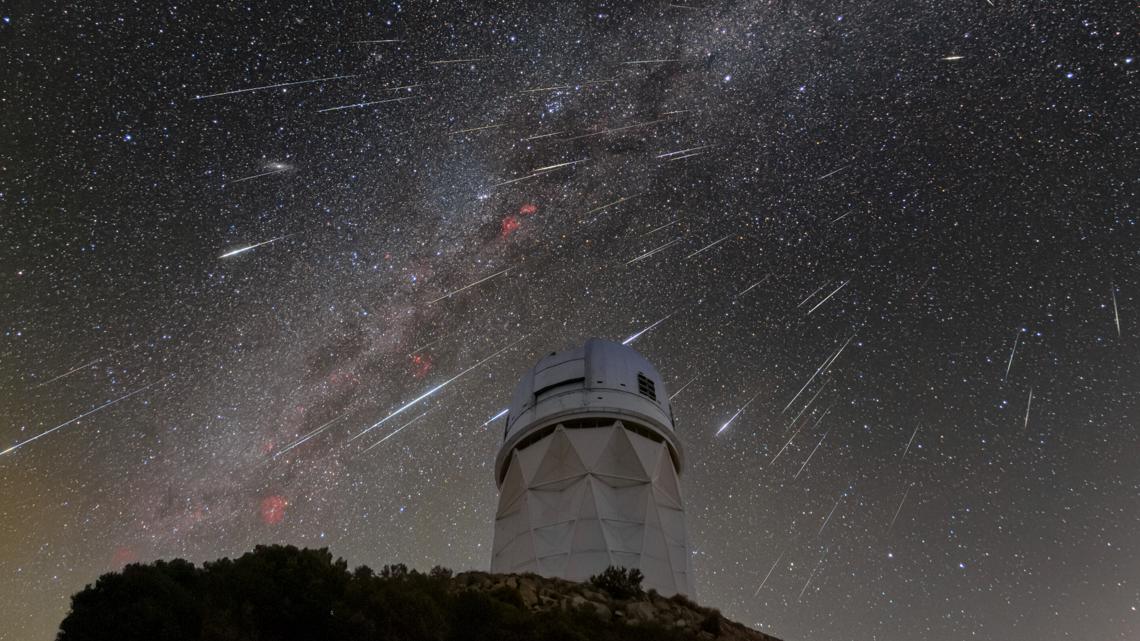Spectacular Geminids Meteor Shower: Watch 120 Meteors Per Hour
What Is the Geminids Meteor Shower?
The Geminids Meteor Shower is an annual event that occurs every December, captivating skywatchers around the world with its dazzling display of shooting stars. Unlike most meteor showers caused by comets, the Geminids originate from a rocky asteroid called 3200 Phaethon. As Earth passes through the trail of debris left by this asteroid, fragments collide with our atmosphere, creating spectacular streaks of light.
First observed in the mid-1800s, the Geminids have grown stronger over the years. Today, they are widely regarded as the most reliable and visually stunning meteor shower of the year.
When and Where to Watch the Geminids Meteor Shower
According to astronomy experts, the 2024 Geminids Meteor Shower will peak on the night of December 13 into the early hours of December 14. During this time, viewers can expect to see up to 120 meteors per hour under optimal conditions.
These meteors will appear to radiate from the constellation Gemini, located near the bright star Castor. While Gemini will be the focal point, you don’t need to stare directly at it; meteors will streak across all areas of the sky.
For best results, find a dark, open area away from city lights. Rural areas, national parks, or remote mountains are ideal locations for stargazing.
Tips for Viewing the Geminids Meteor Shower
1. Pick the Perfect Spot
Light pollution is a stargazer’s worst enemy. Use a light pollution map to find a nearby dark-sky location for the clearest views.
2. Timing Is Everything
Plan to start watching after 10 PM local time when the radiant point in Gemini rises higher in the sky. The meteor activity will increase significantly after midnight until dawn.
3. Skip the Telescope
Unlike observing planets or galaxies, meteor showers are best enjoyed with the naked eye. A wide, unobstructed view of the sky is all you need to witness the magic.
4. Dress for Comfort
Winter nights can be brutally cold. Layer up, bring a blanket, and don’t forget a hot beverage to stay warm and comfortable.
Why the Geminids Are Special
The Geminids Meteor Shower is unique because it produces bright, colorful meteors that are often slower than those in other showers, making them easier to spot. The combination of quantity, quality, and timing during a dark December sky ensures an unforgettable experience.
Unlike spring and summer meteor showers, the Geminids coincide with longer nights, giving viewers plenty of time to catch the full display. Additionally, because they originate from an asteroid rather than a comet, Geminid meteoroids tend to be denser and cause more vibrant bursts of light as they burn up in Earth’s atmosphere.
What If the Weather Doesn’t Cooperate?
Clouds, rain, or even urban light pollution can sometimes interfere with stargazing plans. Don’t worry; you can still enjoy the magic of the Geminids from the comfort of your home. Several organizations and observatories, like NASA and The Virtual Telescope Project, often livestream major celestial events, including meteor showers.
This way, even if you’re unable to head outside, you won’t miss the chance to marvel at this breathtaking spectacle.
Bring the Geminids Meteor Shower to Life for Kids
If you’re a parent, the Geminids Meteor Shower is a wonderful way to introduce your children to the wonders of space. Make it a family event by packing snacks, playing space-themed games, or reading about constellations. Moments like these can ignite a lifelong passion for science and astronomy in young minds.
Other Celestial Events to Watch in December
While the Geminids are the main highlight of December’s night skies, they aren’t the only show in town. December also brings the Ursids Meteor Shower, peaking around December 22. Though less pronounced, the Ursids can provide an additional treat for stargazers later in the month.
Additionally, keep an eye out for Venus shining brightly near the horizon and, on particularly clear nights, faint sights of several deep-sky objects in the Milky Way.
Don’t Miss the Geminids Meteor Shower: A Memory to Cherish
The Geminids Meteor Shower will undoubtedly be a highlight of the year for astronomy enthusiasts and casual stargazers alike. With approximately 120 meteors per hour gracing the skies at its peak, this event is nature’s very own light show, guaranteed to leave you in awe.
So, mark your calendars, prepare your viewing spot, and enjoy this magical moment under the stars. For more insights, tips, and updates on astronomical events, visit ZEX News.
“`





